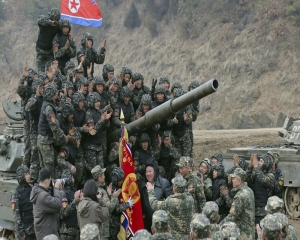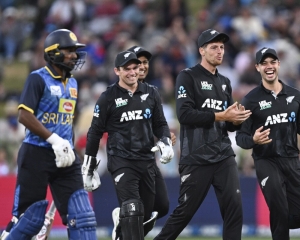Despite warnings from experts about the perils of unchecked quarrying and deforestation in the Western Ghats, successive governments failed to act, leading to Wayanad disaster
S K Pottekkat, who could be rated as India’s best travelogue writer has elaborated on his 1955 visit to Finland. “The country’s area is 1,30,119 sq miles out of which 71 per cent is forests. Finland’s main source of income is the pine trees grown in its forests. But to get permission from the government to cut down a single pine tree, one has to furnish proof that he has planted six pine saplings,” writes Pottekkat in his memoirs.
He was a delegate to the World Peace Council meeting held in Helsinki, the capital city. In 2024, despite a massive industrialisation drive, the country has the tenth highest percentage of forest cover in the world. Pottekkat hailed from Kozhikode, the neighbouring district of Wayanad.
Once the region was full of evergreen forests filled with exotic trees, plants and flowers. Folklore is that the tribal youth who led a team of Englishmen to Wayanad was shot dead by the visitors to ensure that no more outsiders entered the fertile landscape.
But Wayanad has become a teardrop since 30 July 2024 as landslides and flash floods struck the district in quick succession swallowing hundreds of people and their houses. Pinarayi Vijayan, the chief minister, has asked the Centre to release Rs 2,000 crore as the first instalment towards the rescue, rehabilitation and reconstruction mission to be undertaken by the Government of Kerala.
He also blamed the Centre for its failure to provide the exact date, time and place of the natural disaster and has vowed to establish the State’s early warning system for floods, landslides and heavy rainfalls.Vijayan will outclass the best of the entrepreneurs in the skill of mobilization of resources for the Chief Minister’s Disaster Relief Fund.
All media briefings by Vijayan end with him announcing the details of persons who have contributed to the CMDRF in the aftermath of landslides and deluge that devastated Wayanad. But what stands out is the generous offer made by High Range Rural Development Society, a non-governmental organisation, which came forward to build houses for all those who lost their dwelling places in the flash floods. According to the Kerala Government’s estimate, 500 homes were washed away by the gushing waters. The HRDS told the Government that it would rebuild/construct 500 safe and secured houses each of 700 sq ft and costing Rs 10 lakh free of cost.
The NGO also told the government that it would help the landslide victims to set up group farming so that they could earn a reasonably fair monthly income. All the 500 houses to be constructed by the HRDS will feature self-contained guest rooms which could be rented out as part of the homestay programme. But Vijayan and his comrades are cold to the offer.The Centre has asked Vijayan to submit details of the losses suffered in nature's fury and how the State would go ahead with the rehabilitation and reconstruction. Though the disaster struck nearly a month ago, the Government has yet to come out with the details of the losses.
In the aftermath of the 2018 floods, Vijayan had demanded Rs 40,000 crore as flood relief which included Rs 20,000 crore to rebuild the roads washed away in the deluge.
But senior officials who took stock of the situation once the flood water receded had told that roads could be rebuilt with Rs5,800 crore. As part of mitigating future floods, Vijayan accompanied by an entourage of relatives (including his five-year-old grandson) and senior bureaucrats undertook a junket to the Netherlands.
But there is no end in sight for the floods in Kerala.
There is no need to search for the reason behind the landslides and floods in Wayanad and other places in the State. Prof Madhav Gadgil, a noted environmentalist who headed the Western Ghats Ecology Expert Panel (WGEEP) had told the State Governments not to disturb the ecology and environment beyond the current level.
The team of experts had found to their horror that quarrying and sand mining of unprecedented level were taking place with official connivance across the length and breadth of Western Ghats and this included Wayanad.In 1986, this writer shot a television documentary on the Wayanad district for Doordarshan.
There were no resorts or star hotels those days anywhere in the district. The District Collector Raveendran Thampi had been sanctioned one room as his camp office in the low power transmitter station of the Doordarshan at Kalpetta. Immediately after nature's fury in July 2024, Prof Gadgil said that the disaster was a man-made one and was waiting to happen at any time. “Wayanad has no more space for resorts, quarries and sand mining,” said Prof Gadgil immediately after the landslide and flash floods.
But what the chief minister said in his briefing was shocking. “The Gadgil committee report is a big joke and one need not take it seriously,” said Vijayan.The committee of experts led by Prof Gadgil toured the entire Western Ghats region and they were shocked by the kind of quarrying, mining and deforestation that was happening in the region. Prof Gadgil had described the Western Ghats region as the Water Tower of peninsular India.
Vested interests including religious groups are exploiting Wayanad to the hilt and this made the committee ask the authorities to stop herewith the constitution of special economic zones and reschedule reservoir operations to downstream flows. More than what the Gadgil Committee had said in its report, what Prof T P Kunhikannan, a CPI(M) activist, had said about the report is significant.
A thorough study by Kunhikannan has proved that Prof Gadgil’s suggestions should be accepted in toto by the authorities concerned. “The Church is campaigning against Gadgil Committee findings to save its commedcial interests. There is nothing anti-people or anti-minorities in the report,” said Prof Kunhikannan in his studies “Gadgil Report and Kerala’s Development”.
The top echelons of the Church read pastoral letters asking the laity to stage demonstrations across the country against the report as it was anti-minority,” said Kunhikkannan.No purpose will be served by subjecting the Wayanad disaster to another academic analysis. The Church sabotaged the Gadgil committee report by terming it as anti-development, anti-farmers and anti-people.
Through a series of pastoral letters (which were read out during Sunday Mass), the clergy unleashed a blitzkrieg against the WGEEP report. The then union government appointed another committee headed by G Kasturirangan, former ISRO chairman, to “examine” the feasibility of Gadgil’s findings. Kasturirangan did his masters proud by diluting the WGEEP report and that was the death warrant of Wayanad.
(The writer is special correspondent with The Pioneer; views are personal)


























